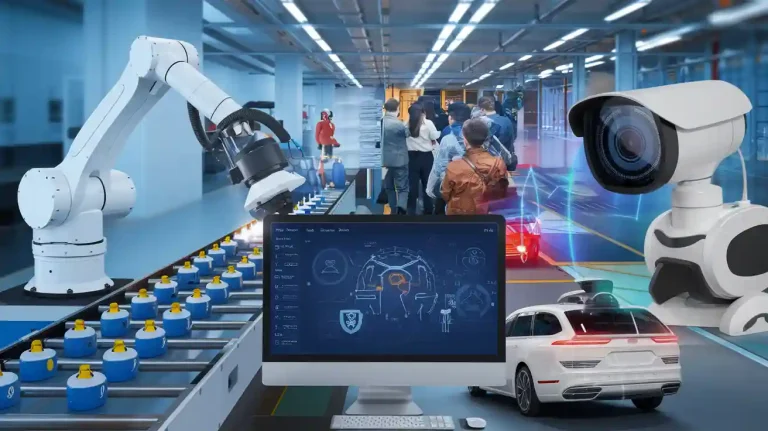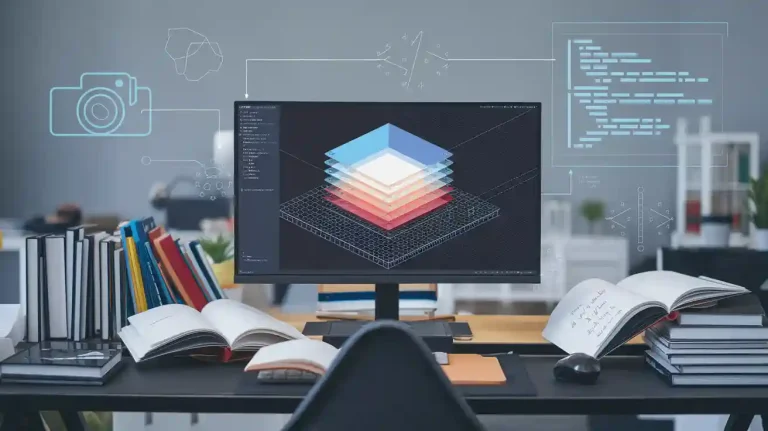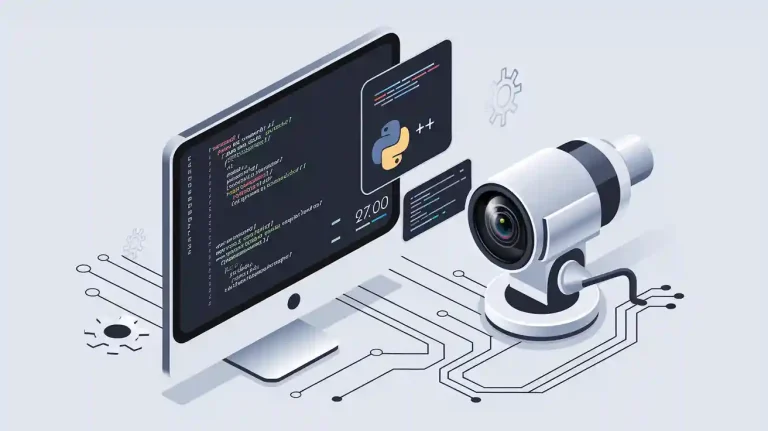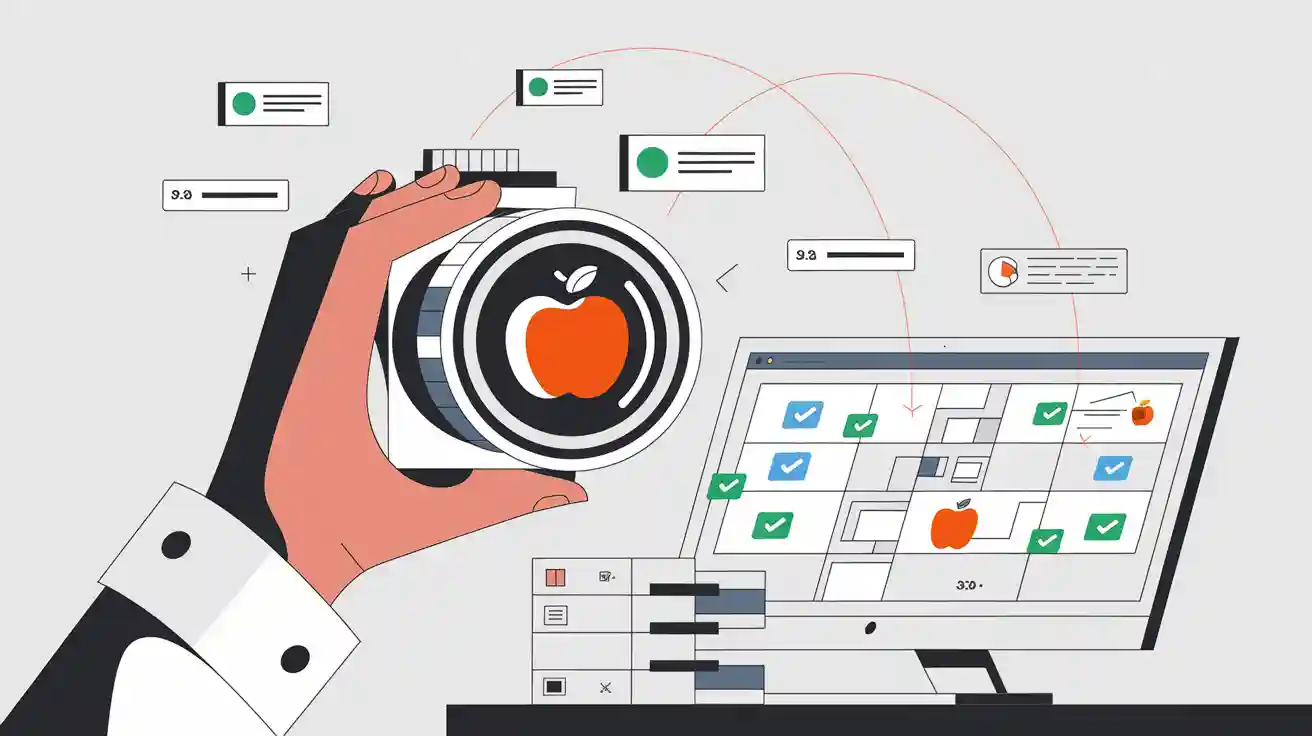
A supervised learning machine vision system uses labeled image data to train computer vision models for tasks such as object detection and product inspection. By feeding the system many images with known outcomes, supervised learning helps computers recognize patterns and classify objects. In industries like automotive and electronics, computer vision powered by supervised learning enhances inspection accuracy and speeds up production. The global machine vision market is set to grow from $15.83 billion in 2025 to $23.63 billion by 2030, driven by advances in AI and supervised learning methods.
Supervised learning machine vision systems outperform traditional inspection methods in several key ways:
| Performance Metric | Improvement Description |
|---|---|
| Object localization accuracy | Improved by 16.34% using advanced AI prompting. |
| Inspection error reduction | Over 90% fewer errors than manual inspection. |
| Defect rate reduction | Up to 80% fewer defects detected. |
| Labor cost reduction | About 50% lower quality assurance labor costs. |
| Production cycle time | Up to 20% faster with real-time AI processing. |
Key Takeaways
- Supervised learning uses labeled images to teach computers how to recognize and classify objects accurately.
- High-quality labeled data and careful training help machine vision systems perform well in real-world tasks like inspection and diagnosis.
- These systems improve accuracy, reduce errors, and speed up processes in industries such as manufacturing, healthcare, and security.
- Supervised learning models require time and effort to label data but deliver reliable and precise results compared to other methods.
- Advances like self-supervised and hybrid learning are making supervised machine vision systems more powerful and cost-effective.
Supervised Learning Machine Vision System
What Is Supervised Learning?
Supervised learning is a type of machine learning where a model learns from labeled data. In a supervised learning machine vision system, each image in the dataset comes with a correct answer, called a label. The model uses these labels to learn how to recognize patterns and make predictions. For example, if the task is classification, the model learns to assign each image to a specific category, such as "cat" or "dog." In regression tasks, the model predicts a value, like the size of an object in the image.
A supervised learning machine vision system relies on a training dataset that pairs each image with its label. The model studies these pairs and tries to find a function that maps the input image to the correct output. This process helps the model learn to identify objects, read labels, or measure features in new images. Supervised learning forms the backbone of many computer vision applications, including object detection, product inspection, and medical imaging.
Supervised learning in machine vision uses labeled data to teach models how to classify or predict outcomes. This method is essential for tasks like classification and regression, making it a core part of supervised machine learning systems.
The main components of a supervised learning machine vision system include:
- Lighting: Illuminates the object so the image sensor can capture clear details.
- Lens: Focuses light onto the image sensor.
- Image Sensor: Converts light into a digital image.
- Vision Processing Unit (VPU): Runs algorithms to analyze the image and make decisions.
- Communications: Sends data or signals to other devices or systems.
Supervised machine learning depends on high-quality labeled data. Labels help the model learn to recognize and classify objects, which improves accuracy and reliability. The quality of the labels in the dataset affects how well the model can generalize to new data. Poor labeling can slow down projects and reduce performance, while accurate labels help the model handle different environments and conditions.
How It Works
A supervised learning machine vision system follows a clear process from data collection to deployment. The steps include:
- Data Preparation: Collect a large, high-quality dataset. This dataset should include many images that represent the real-world task. Clean the data by removing errors and duplicates. Use data augmentation, such as flipping or rotating images, to make the model more robust.
- Model Selection: Choose a machine learning model that fits the problem. For computer vision, convolutional neural networks (CNNs) are popular because they work well with images.
- Training the Model: Feed the training data into the model. The model compares its predictions to the correct labels and adjusts its parameters to improve accuracy. This process repeats over many cycles, called epochs.
- Evaluation: Test the model on new images that it has not seen before. Use metrics like accuracy, precision, and recall to measure performance. If the model does not perform well, adjust the training process or improve the dataset.
- Deployment and Monitoring: Deploy the trained model to a real-world system, such as a factory line or a medical device. Monitor its performance and retrain the model as needed to keep it accurate.
High-quality labeled data and careful training help supervised learning models perform well in real-world scenarios. Continuous evaluation ensures the model can handle new images and changing conditions.
Labeling images is a key part of supervised learning. Human experts often tag objects in each image, which helps the model learn. The training phase uses these labeled images to teach the model, while the testing phase checks how well the model can predict labels for new images. Data augmentation increases the size of the dataset and helps the model recognize patterns in different situations.
A supervised learning machine vision system can achieve high accuracy and reliability, but it requires a lot of time and effort to label the data. Mistakes in labeling or setup can affect performance, but human supervision allows for corrections. The quality of the training dataset and the learning process directly impacts how well the model works in real-world applications.
Machine Learning in Vision Tasks
Classification and Regression
Supervised learning plays a key role in computer vision tasks like classification and regression. In classification, a model learns to assign each image to a specific category. For example, a computer vision system can use supervised learning classification to sort images of animals into groups like "cat," "dog," or "bird." Regression tasks use supervised learning to predict continuous values, such as the size or position of an object in an image. Supervised machine learning relies on labeled training data, where each image comes with a correct answer. Human experts often create these datasets and oversee the training process to ensure accuracy. Supervised learning algorithms like decision trees and random forests help models learn from features in the data, improving image recognition and processing. These methods allow computer vision systems to handle complex images and overlapping features, making them more reliable than rule-based systems.
- Common vision tasks addressed by machine learning include:
- Classification
- Segmentation
- Object identification
- Defect detection
- Anomaly detection
Supervised learning enables models to map input data to output labels, supporting accurate classification and regression in image processing.
Object Localization
Object localization is a supervised learning task that helps computer vision systems find and mark the exact position of objects in an image. The process starts with object detection, where deep learning models identify possible object regions. The model then draws bounding boxes around detected objects, refining their positions. Advanced techniques like instance segmentation outline object boundaries at the pixel level. Feature extraction methods capture details such as texture, shape, and color, which improve localization accuracy. Post-processing steps, including bounding box refinement, remove overlapping boxes and produce precise results. Supervised machine learning uses labeled training data to teach models how to perform object localization, making it essential for tasks like product inspection and autonomous vehicles.
Supervised Machine Learning Algorithms
Supervised learning algorithms form the backbone of computer vision and image processing. These algorithms use labeled datasets and training data to learn how to classify, detect, and segment objects in images. Some of the most widely used supervised machine learning algorithms include:
| Algorithm | Strengths |
|---|---|
| Deep Learning | Excels in image classification; handles high-dimensional data; learns complex patterns. |
| Classification Tree Ensembles | Robust to outliers; scalable; models non-linear decision boundaries via hierarchical structure. |
| Support Vector Machines (SVMs) | Effective with non-linear kernels; finds decision boundaries maximizing class separation. |
Convolutional neural networks (CNNs) stand out among supervised learning algorithms. CNNs use layers to learn spatial features in images, improving accuracy in image recognition, object detection, and segmentation. Advanced CNN architectures and techniques like transfer learning help models adapt to new tasks with less data. These strengths make CNNs a top choice for supervised machine learning in computer vision.
Real-World Applications
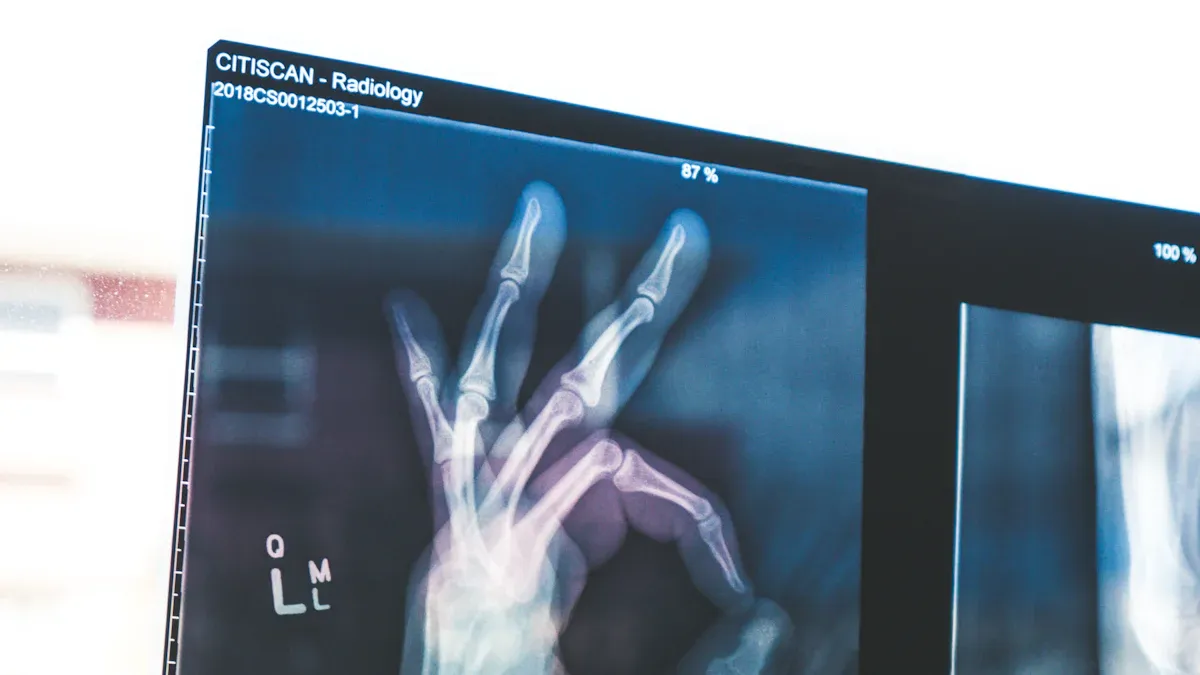
Industrial Automation
Supervised learning machine vision systems have transformed industrial automation. In manufacturing, these applications detect defects, measure parts, and guide robots with high precision. Automated quality control uses computer vision to inspect products faster and more accurately than humans. For example, AI-powered systems in factories reduce errors by over 90% and increase defect detection accuracy to more than 99%. Companies like Tesla and General Motors report up to 90% fewer product defects and 30% less material waste. Inspection times drop from 60 seconds to just over 2 seconds per unit. These improvements lower labor costs by about 50% and reduce downtime by up to 50%. The following table shows measurable gains in productivity and quality:
| Performance Metric | Improvement with Machine Vision |
|---|---|
| Error reduction | Over 90% fewer errors |
| Defect detection accuracy | Over 99% accuracy |
| Inspection speed | 25% faster inspections |
| Material waste reduction | 30% less waste |
| Downtime reduction | Up to 50% less downtime |
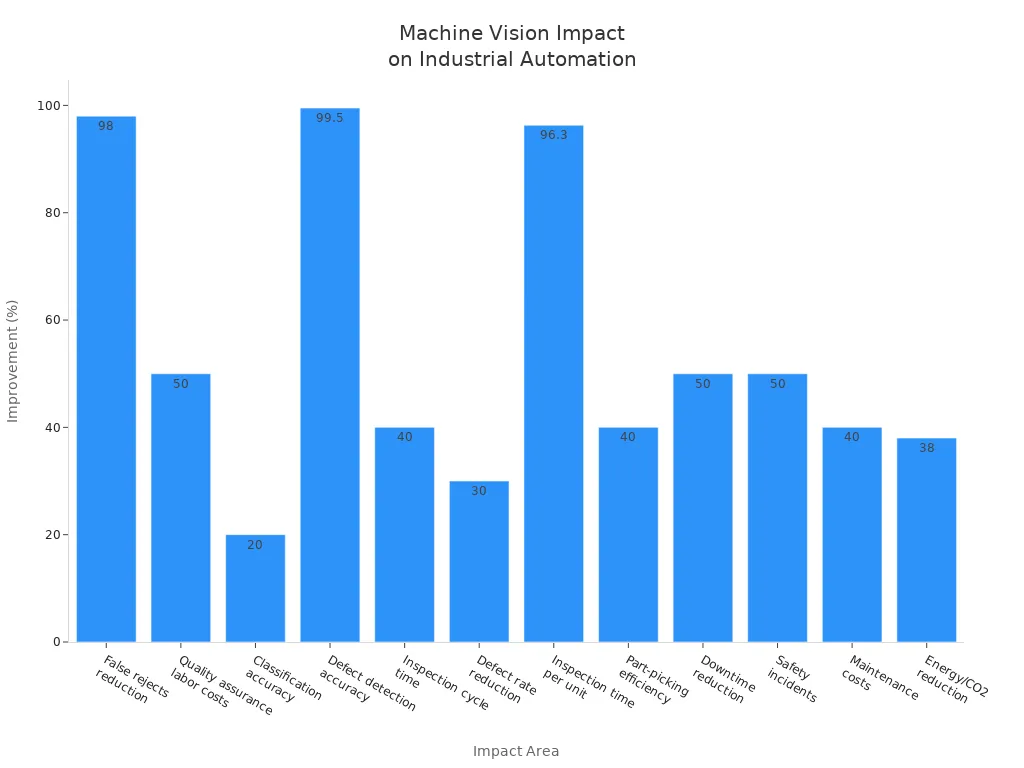
Healthcare Imaging
Healthcare imaging relies on supervised learning for disease detection and diagnosis. Computer vision models, such as convolutional neural networks, analyze medical images to find signs of cancer, eye disease, or neurological disorders. These applications help doctors spot problems earlier and with greater accuracy. For instance, deep learning models in breast cancer screening reach sensitivity rates up to 80%, higher than many radiologists working alone. Automated systems also support diagnosis of Alzheimer’s disease and cataracts. The table below highlights some key uses:
| Years | Model(s) Used | Application Field |
|---|---|---|
| 2013–2014 | CNN, SAE, DBM, SVM | Cancer diagnosis |
| 2014 | DBM | Chronic gastritis diagnosis |
| 2014–2015 | SAE | Alzheimer’s Disease classification |
| 2015 | CNN | Nuclear cataract classification |
Supervised learning in healthcare imaging improves diagnostic speed and reduces human error, making it a vital real-world application.
Video Recognition
Video recognition uses supervised machine learning to analyze and understand video feeds in real time. Security and surveillance systems depend on computer vision to detect people, vehicles, and unusual activities. Deep learning models, such as YOLO, identify and track objects frame by frame. These applications generate metadata, such as object classes and movement paths, which help security teams spot threats quickly. Facial recognition and behavioral biometrics also use supervised learning to identify individuals for access control. Edge AI devices process video locally, ensuring fast response and privacy. These systems support human operators by providing consistent, objective analysis and improving safety in public spaces.
Supervised learning machine vision systems power many real-world applications, from factory automation to healthcare and security. Their impact continues to grow as computer vision and image recognition technologies advance.
Pros, Cons, and Comparisons
Advantages
Supervised learning offers many benefits for machine vision systems.
- It uses labeled data to train a model, which helps the model learn clear input-output relationships.
- This approach works well for classification and regression tasks, such as object recognition, facial recognition, and defect detection.
- Supervised learning often achieves higher accuracy than unsupervised methods because the model learns from examples with known answers.
- The training process creates models that generalize well to new data, making them reliable for real-world computer vision tasks.
- Supervised learning models are easier to implement when the goal is clear, like mapping images to categories.
- Although labeling data takes time, the improved accuracy and reliability often make the effort worthwhile.
Challenges
Supervised learning also faces several challenges.
- The need for large amounts of labeled data makes the process labor-intensive and time-consuming.
- Manual annotation requires skilled people and can lead to human error, which affects model performance.
- As data volumes grow, labeling becomes more expensive and harder to manage.
- Models must handle changes in lighting, scale, and object position, which adds complexity to training.
- High costs and time limits can slow down projects and reduce innovation in machine learning systems.
High costs and time constraints in traditional data collection can delay project timelines and limit innovation.
Other Learning Methods
Other machine learning methods offer different strengths and weaknesses for vision tasks.
- Unsupervised learning does not need labeled data, so it works well when labels are hard to get, but it usually gives less precise results.
- Semi-supervised learning combines a small labeled dataset with a larger unlabeled set, which can improve accuracy while reducing labeling costs.
- Reinforcement learning uses feedback to train agents over time. It works best for tasks like robotics, not standard image classification.
| Learning Type | Data Requirements | Performance in Machine Vision | Typical Use Cases and Notes |
|---|---|---|---|
| Supervised Learning | Needs lots of labeled data; labeling is costly | High accuracy in classification and object detection | Used for classification and regression; best with enough labeled data |
| Unsupervised Learning | No labeled data needed | Less precise, harder to measure accuracy | Good for segmentation and clustering; flexible when labeled data is scarce |
| Semi-Supervised Learning | Small labeled set plus large unlabeled set | Improves accuracy over unsupervised learning | Useful in fields like medical imaging; balances cost and performance |
| Reinforcement Learning | Uses reward feedback, no labeled dataset needed | Less common for standard classification | Used in robotics and autonomous vehicles for tasks needing iterative learning |
Supervised learning machine vision systems help industries improve accuracy, speed, and innovation. Companies like Siemens and Zebra Medical Vision use these systems to reduce errors and boost efficiency. New trends shape the future of supervised learning, including:
- Self-supervised learning, which uses unlabeled data to train models and lower costs.
- Hybrid models that combine different learning methods for better results.
- Lifelong learning, which helps systems adapt over time.
These advances make supervised learning more powerful and useful for many fields.
FAQ
What is the main goal of supervised learning in machine vision?
Supervised learning helps computers learn from labeled images. The main goal is to teach models to recognize and classify objects or patterns. This process improves accuracy in tasks like sorting, counting, or detecting defects.
How much labeled data does a machine vision system need?
Most systems need thousands of labeled images for good results. More data usually means better accuracy. High-quality labels help the model learn faster and make fewer mistakes.
Can supervised learning models adapt to new tasks?
Yes, supervised learning models can adapt. Engineers use techniques like transfer learning to retrain models with new data. This method saves time and resources when switching to similar tasks.
What industries use supervised learning machine vision systems?
Many industries use these systems. Examples include manufacturing, healthcare, retail, and security. Each field uses machine vision for tasks like inspection, diagnosis, or surveillance.
Are supervised learning systems always better than unsupervised ones?
Not always. Supervised systems work best with lots of labeled data. Unsupervised systems help when labels are hard to get. The choice depends on the problem and available data.
See Also
Understanding Machine Vision Systems And Computer Vision Models
A Comprehensive Guide To Image Processing In Machine Vision
How Cameras Are Used Within Machine Vision Systems







